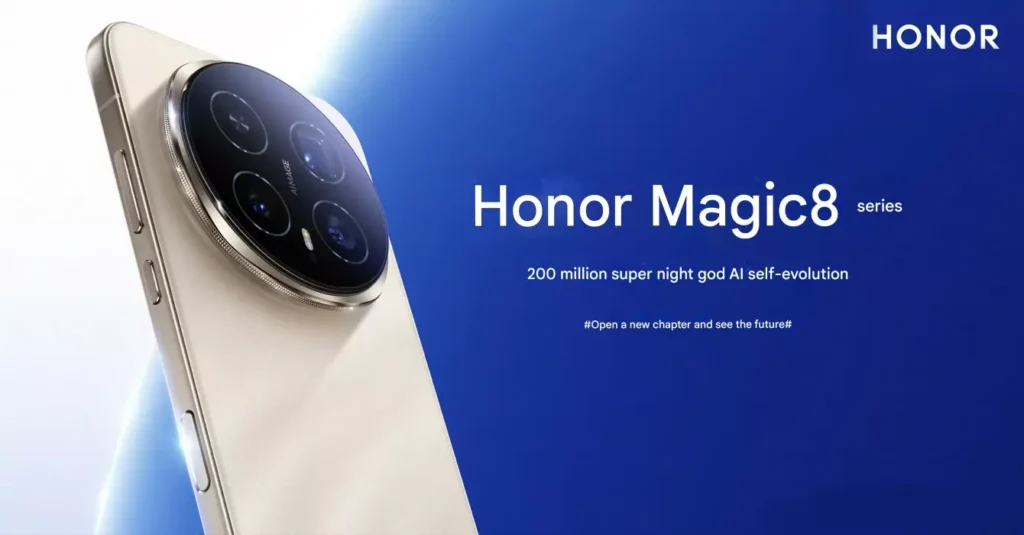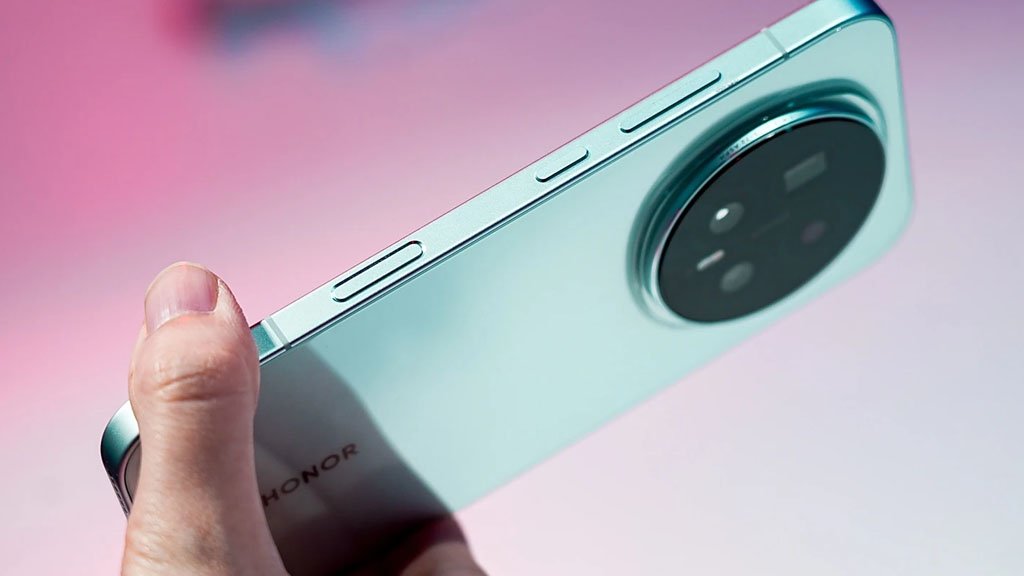Honor’s new side-mounted AI button is one of the headline features of the Magic 8 Pro — a single physical control intended to launch and control a wide range of on-device AI tricks, from instant image restyling to quick video calls. If you’re a reviewer, developer, or power user who wants to evaluate how useful and reliable that button actually is, this guide walks you through a complete, practical test plan: what to check, how to measure success, and how to spot problems. (References to Honor’s announcements and early hands-on reporting are included below so you can compare your results to initial claims.)

Why the AI button Is Important
Honor has situated the Honor Magic 8 Pro AI button as a kind of one-button, multi-purpose gateway to the broader AI capabilities of MagicOS; the button could trigger a one-press shortcut, or a two-press camera trigger or long-press action, such as a YOYO video call or a Magic Color image-restyle tool. It would be a high-touch feature: unpredictable action or performance will degrade the user experience far more than a broken software switch.
Guo Rui, the President of Brand Marketing and Group Chief Marketing Officer at Honor Device, revealed the key features of the Honor Magic 8 Pro AI button in his new post
According to the chief mentioned that physical keys are the most useful part of a device, as they make the device user-friendly. Due to AI integration, many brands have eliminated single-feature buttons from the sides of their phones, but Honor is changing the trend.
“In the AI era, mobile phone side buttons need to achieve ‘one-button, multi-functionality’, requiring integrated thinking for even a small button”, said Guo Rui.
Prep: what you’ll need before testing
A retail (or review) version of the Honor Magic 8 Pro featuring the most recent system firmware. (Early tests include launch time and hardware, so make sure your firmware is correct to the final release before proceeding with tests)
- A latency tester (stopwatch, timing application).
- An effective Wi-Fi network and mobile data (part of AI functions can revert to cloud-based services).
- Some of the test media: photos (where the light varies), short video clips, voice samples, and list of commands you will attempt.
- Optional: a second phone and a high-quality camera to capture the button behavior that could be later reviewing frame-by-frame.
Quick checklist (functional tests of basic functionality)
- Single press: Can it launch the default AI assistant consistently regardless of the screen (locked, home, within an app)? Measure Success rate on 20 trials.
- Double-Click: Is the camera capture or the capture/record behavior Honor refers to consistently triggered by a double-click? Count error and timing error.
- Long-press: Does a long press always go into YOYO video call mode or to the secondary assigned action? Record the points of prompts and permission dialogs that may interrupt the flow.
Measure latency between pressing a button and responding to it in the UI (mean of five trials). A target of the on-device AI activation is anything under 400 ms to launch a UI; anything over 800 ms starts to become sluggish.
AI feature tests
Honor’s demos highlight two flagship experiences you should test on the Honor Magic 8 Pro AI Button .
- Magic Color / image restyle:
To invoke Magic Color, open the gallery, choose a 12MP photo and press the AI button. Attempt a one sentence prompt to remodel the image and quantify the naturalness of the result and the time required to produce it. Test on pictures that have complicated textures (hair, foliage) to identify artefacts.
- YOYO video call and voice assistant interactions:
Press to dial a YOYO. Changing of test cameras, access to microphones and latency. Test natural-language prompts, also, run through the assistant (e.g., “Make this portrait look film-like and then export a 1080p version of it). Add whether local (on-device) processing is applied or the phone offloads to the cloud – Honor has focused on on-device NPU acceleration but still servers can be used in certain operations.
In each feature test: quality of output, time to result, failure modes (crashes, timeouts), does the phone give warnings about privacy or data usage when cloud processing is turned on?
Stress and reliability test.
- Quick usage: Streak-fold: The AI button needs to be pressed in a loop 100 times and thermal throttling, UI freezes, or poor inference quality should be observed. New models of Honor and Snapdragon 8 Elite Gen 5 silicon are being sold as capable of on-device AI use, but practical sustained performance may be exposed through thermal constraints in the real world.
- Background/locked states: Background/locked states are when the phone is in the locked state, another heavy app is loaded (game, benchmark), and when the battery is low to observe how the behavior varies.
- Network conditions: Try features on Wi-Fi, on cellular, and in airplane mode (where supported) to confirm which functions truly run locally.
Developer & power-user checks
Checks Honor customization of the AI button (assignable actions, third-party app hooks). Ensure the degree of integration with Android intents or the functionality is restricted to Honor applications. This is important to programmers who wish to create shortcuts that can make the button take action.
Permission and transparency, privacy.
Note down all permissions asked during first use (camera, mic, storage, cloud access). In the event that the AI processing does not remain in the machine, the OS must specify this point. Observes the ease with which one can revoke permissions or reassign the button to a local action that does not violate privacy.
What to expect (and how to report problems).
In case of failures, in case of crashes, unusual latency (>1s), uneven mapping, etc. record logs (ADB logcat where possible), time stamps, and sample media and send them to Honor support and public forums. Fixes are fastened by reproducible steps and brief screen records.
Final checklist (summary)
- Functional reliability (single, double, long press) — success rate and latency.
- AI output quality (Magic Color, YOYO) and whether processing is local/cloud.
- Thermal and sustained-use behavior.
- Behavior under different network/battery states.
- Developer hooks and privacy controls.
Closing thought
The Honor Magic 8 Pro AI button is a bold attempt to surface on-device intelligence into a single user control. Thorough testing should combine objective measurements (latency, success rate, thermal behavior) with subjective evaluation (output usefulness, privacy transparency).




